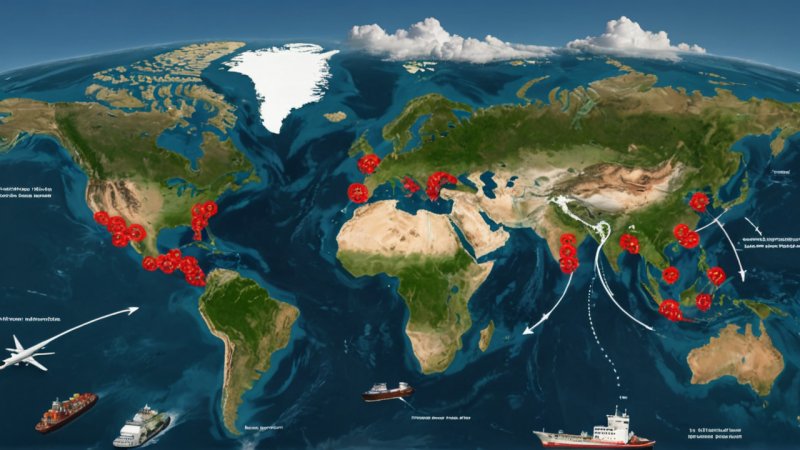Climate change is no longer a distant threat; it is a pressing reality that affects various aspects of our lives, including global supply chains. As the world grapples with rising temperatures, extreme weather events, and shifting ecosystems, industries must adapt to these changes to ensure sustainability and resilience.
One of the most significant impacts of climate change on supply chains is the increased frequency and intensity of natural disasters. Hurricanes, floods, and wildfires can disrupt production, transportation, and distribution networks. For instance, in 2020, the COVID-19 pandemic revealed vulnerabilities in global supply chains, and climate-related disruptions further exacerbated these issues. Companies that rely on just-in-time inventory systems found themselves particularly vulnerable, as delays in shipments from affected areas led to shortages and increased costs.
Furthermore, climate change affects agricultural supply chains. Changes in temperature and precipitation patterns can lead to crop failures and reduced yields. For example, droughts in key agricultural regions can lead to food shortages and increased prices, impacting not only farmers but also consumers and businesses that depend on these products. This has prompted many companies to rethink their sourcing strategies and invest in more resilient agricultural practices.
Another critical concern is the impact of climate regulations on supply chains. As governments worldwide implement stricter environmental policies to combat climate change, businesses are forced to adapt. Companies that fail to comply with these regulations may face penalties, while those that proactively embrace sustainable practices can gain a competitive advantage. This shift towards sustainability is not just about compliance; it also offers opportunities for innovation. For example, companies are increasingly investing in renewable energy sources and sustainable materials to reduce their carbon footprints.
In addition to these challenges, climate change poses risks to logistics and transportation. Rising sea levels threaten port infrastructure, while extreme weather can disrupt shipping routes. As a result, businesses must develop contingency plans and diversify their transportation options. Some companies are exploring alternative shipping methods, such as rail or electric vehicles, to mitigate these risks and enhance their resilience.
To navigate the complexities of climate change, companies are increasingly adopting technology-driven solutions. Advanced analytics, artificial intelligence, and blockchain technology can enhance supply chain visibility and enable better decision-making. By leveraging these tools, businesses can identify vulnerabilities, optimize inventory management, and improve overall efficiency.
In conclusion, climate change is a multifaceted challenge that significantly impacts global supply chains. From natural disasters to regulatory changes, businesses must adapt to ensure resilience and sustainability. By embracing innovative practices and technologies, companies can not only mitigate risks but also seize new opportunities in a rapidly changing environment. The future of supply chains will depend on the ability to respond proactively to the challenges posed by climate change.






